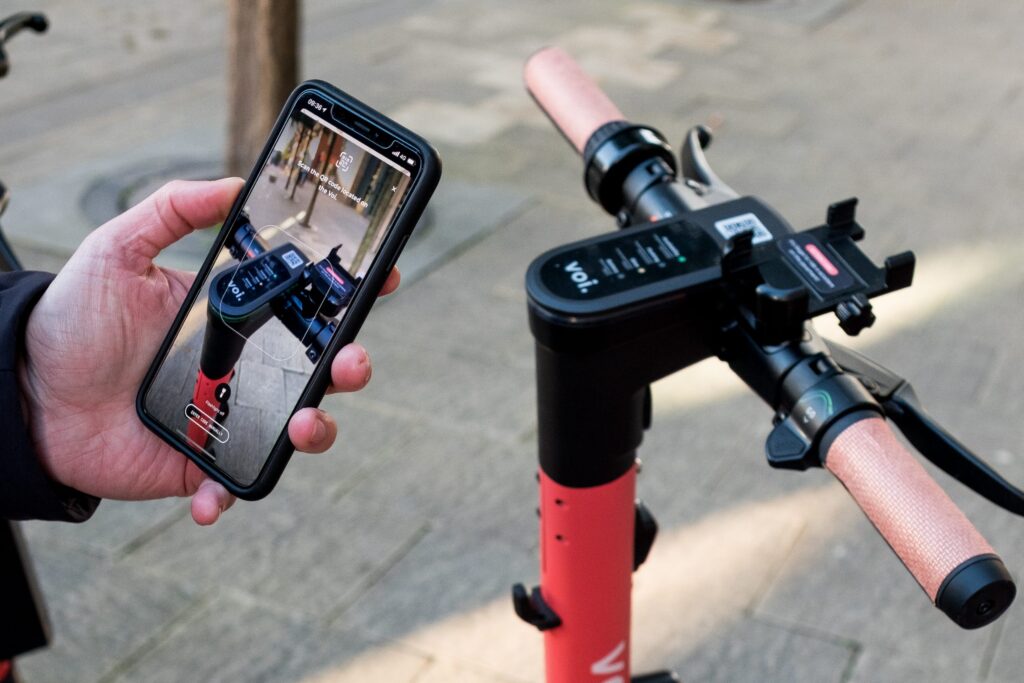In recent years, the micromobility industry has seen an explosion of new technologies.
From geofencing, identity verification and computer vision technology to connected “car telemetry” that can create an overall rider safety score, if there’s one thing this technology has demonstrated, it’s that its applications can be used to level the playing field between micromobility vehicles and cars.
“There's no question about the potential of this technology,” said Tom Nutley, chief revenue officer at Urban Sharing, “but the question I have is whether cities should mandate this for shared micromobility operators.”
Operator and end user costs
One of Tom’s concerns about cities demanding advanced technology from operators is the impact this will have on unit economics and passenger experience.
Nutley believes the success of a shared micromobility system depends on three things: scale, density and visibility, and these should never be sacrificed.
“Technologies such as advanced sensors, collision avoidance systems and other AI can cost as much as the asset itself,” Tom says.
Nutley argues that these requirements will burden not only operators but also passengers, especially when venture capital funding is scarce: “Someone has to pay for the cost of the technology, and at the moment, it's no one other than the users.”
The knock-on effect, he sees, is that operators are now putting vehicles in places where they know they will be used – town centres and Zone 1 in cities – rather than in suburban areas where transport options are limited and people have to drive.
“It starts to muddy the waters of what the industry is actually trying to achieve.”
In conversation with Christy Pearson, European Micromobility Co-Chair and Director of Central Policy at Voi, she said: “Rather than mandating specific technologies, cities should focus on identifying core problems and giving operators the flexibility to innovate and solve the problem in the best way possible.”
Tom Nutley agrees, but thinks cutting-edge technology can go too far in some cases. Requirements like helmet requirements, ID checks and the need to insert card details can actually deter riders from using the system. “These things can be barriers and can be overkill,” Nutley says.
But Christopher Kemp, chief operating officer at Irish mobility company Zeus Scooters, highlighted the safety that identity verification would bring to the market, following a sharp increase in fraud and risky driving over the past few years.
“But implementing this would impose significant costs on operators,” Christopher agreed. “The city needs to ensure that it takes these costs into account when implementing fees, and should consider sharing these costs in the future.”
“Big Brother Coercion”
Tom argues that this “invaluable advanced technology” is often misused by cities to penalize operators and quantify riders as “bad” riders.
“The problem isn't the technology. It's how the technology is being used.”
Take, for example, computer vision that can detect lidars traveling on sidewalks, allowing operators to group together GPS data from shared systems to quantify which parts of a city need infrastructure improvements.
“But the city doesn't use it for this purpose. The city just wants to know who is riding on the sidewalk, and what comes next are fines and bans.”
“Instead of using data to get better results, cities want to use expensive, powerful enforcement.”
“Why do people ride on sidewalks? Because the area doesn't have the infrastructure needed for micromobility.” Tom says he sees 90% of riders on certain sidewalks, and rather than pinning it down to a certain “type” of person, he attributes it to a lack of infrastructure.
“This is not a matter of indiscriminate use of vehicles, but a matter of the city not having the infrastructure to get people to their destinations.”
Lukas Neckermann, co-founder of InterMobility, agrees that cities need to focus on infrastructure: “It's natural for cities to set certain requirements for the safe operation of micromobility, whether shared or owned. But the most important safety measure is one that cities can institute themselves: infrastructure.”
“Protected lanes, ample dedicated parking, and policies that prioritize bikes and scooters would go a long way to achieving a fair balance of carrots and sticks.”
Tom says it's important to remember why cities want micromobility in the first place: “Because we want fewer people in their cars.”
“We want people to move to micromobility, but right now cities are mandating this advanced technology, which is putting costs on operators and impacting their bottom lines. Cities should either remove the mandate or share the cost. Simple.”

